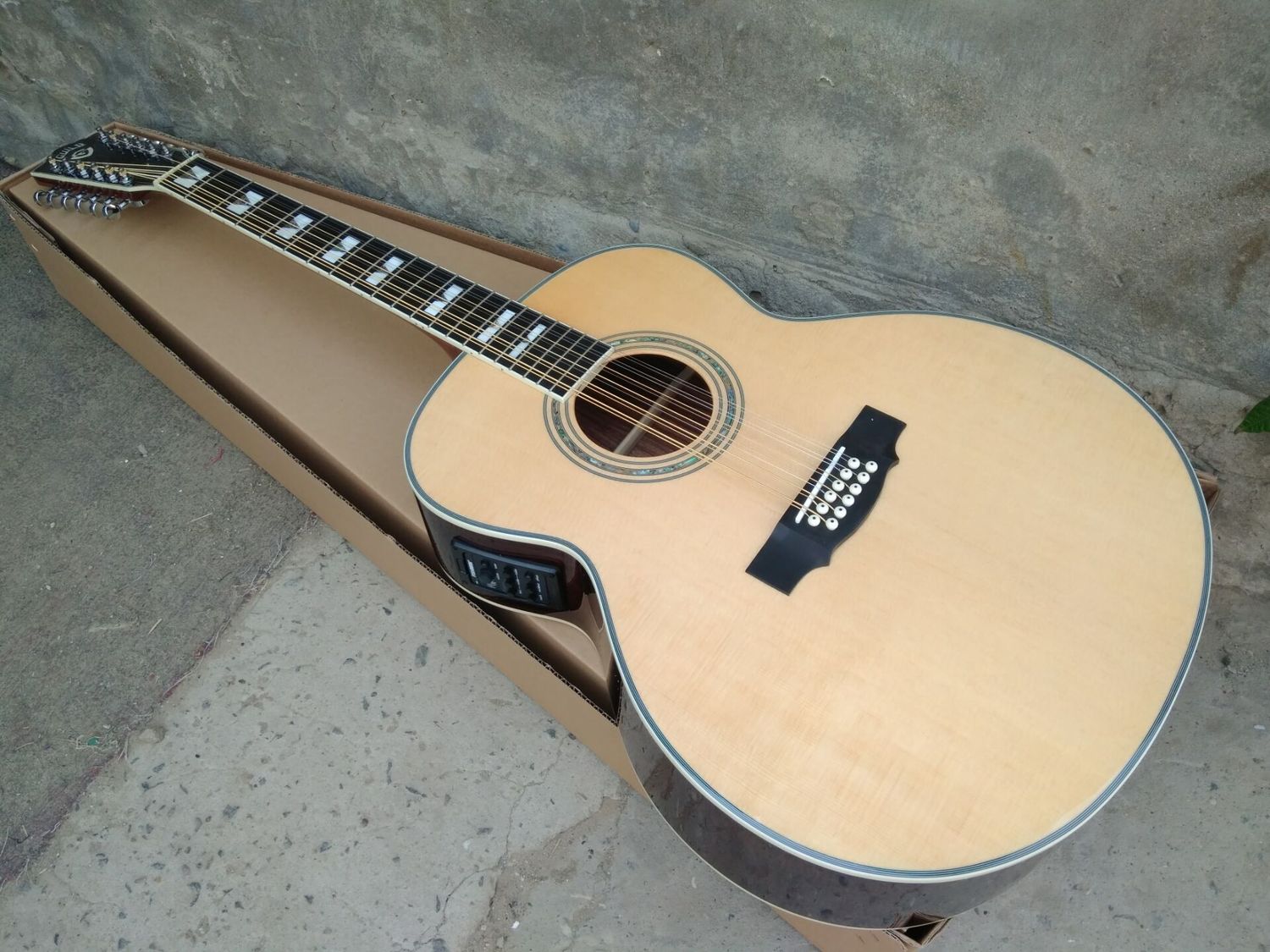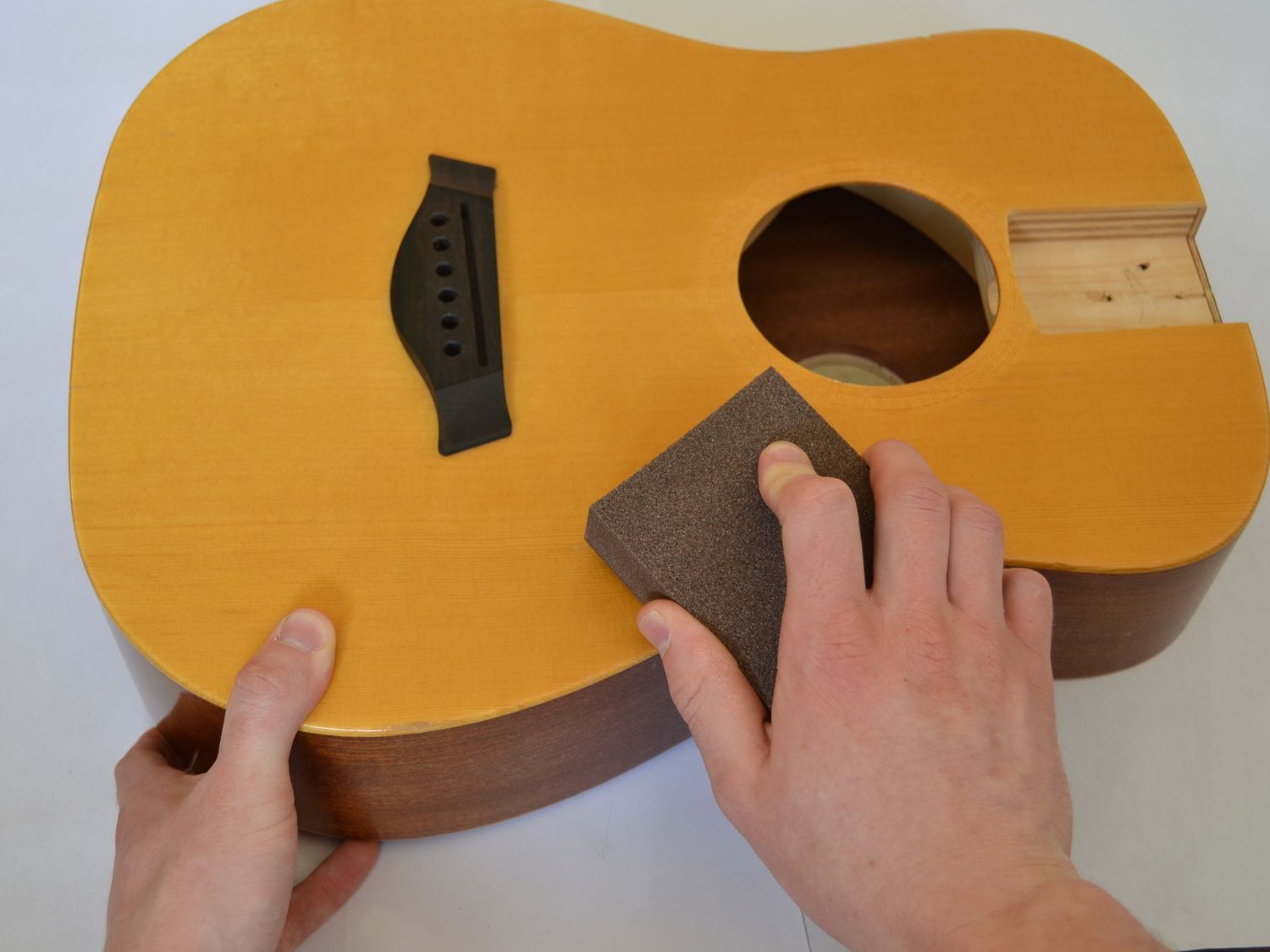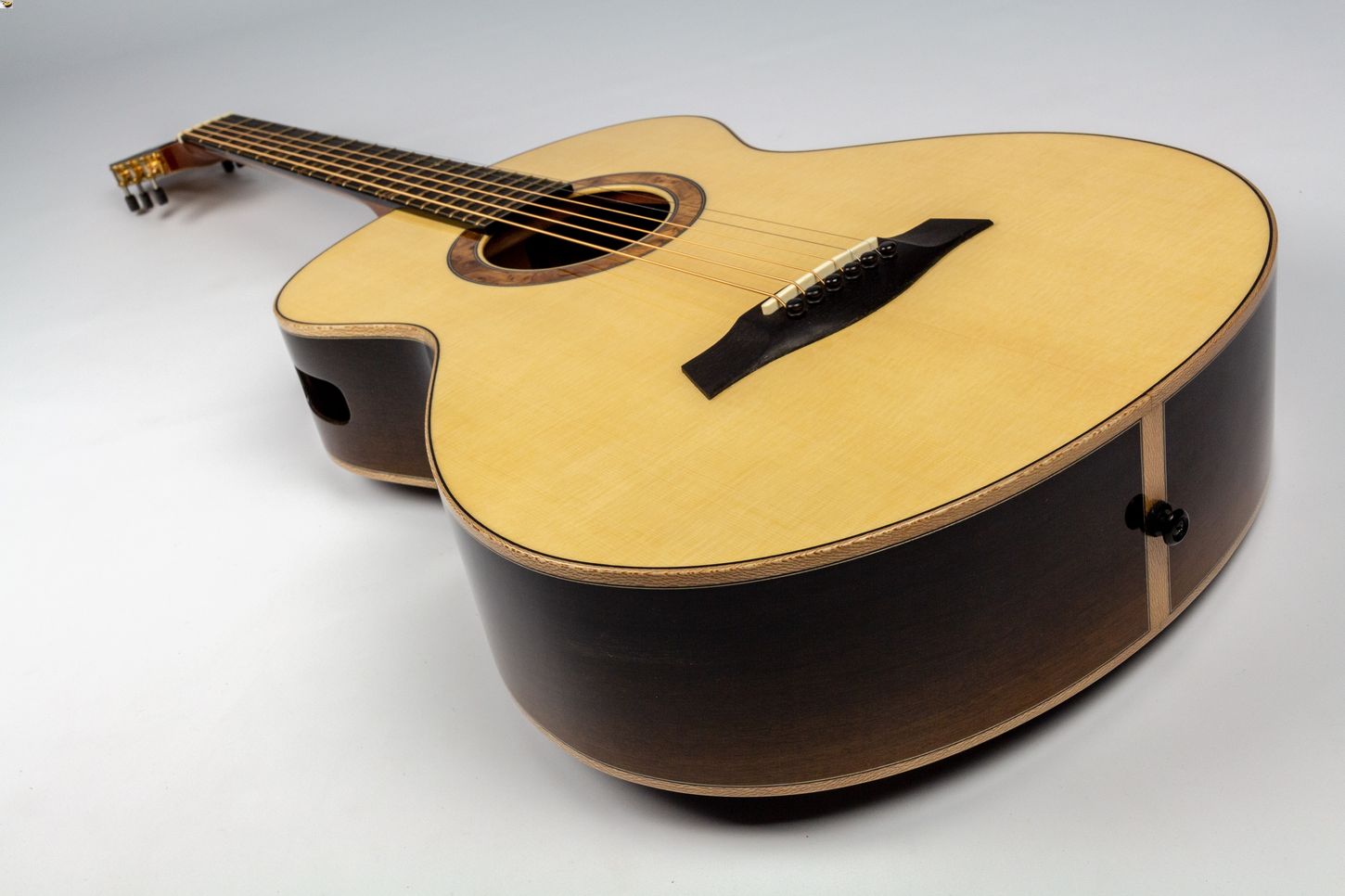Home>Production & Technology>Acoustic>How To Store Acoustic Guitar


Acoustic
How To Store Acoustic Guitar
Published: March 12, 2024
Learn how to properly store your acoustic guitar to protect it from damage and maintain its quality. Follow these tips for safe and effective guitar storage.
(Many of the links in this article redirect to a specific reviewed product. Your purchase of these products through affiliate links helps to generate commission for AudioLover.com, at no extra cost. Learn more)
Table of Contents
Choosing the Right Storage Space
When it comes to storing your acoustic guitar, the first step is to select an appropriate storage space. The ideal location should provide a stable environment that protects the instrument from potential damage. Here are some key factors to consider when choosing the right storage space for your acoustic guitar:
-
Temperature and Humidity Control: Opt for a storage area that maintains consistent temperature and humidity levels. Fluctuations in these factors can adversely affect the wood and overall condition of the guitar. Extremes in temperature and humidity can lead to warping, cracking, or other structural issues. Therefore, it's crucial to avoid storing the guitar in areas prone to rapid temperature changes, such as attics, basements, or near heating/cooling vents.
-
Protection from Environmental Elements: Select a space that shields the guitar from direct sunlight, moisture, and dust. Prolonged exposure to sunlight can cause the finish to fade and the wood to degrade. Additionally, excessive moisture can lead to mold growth and damage the guitar's components. Dust accumulation, if not addressed, can affect the instrument's playability and aesthetics. Therefore, it's advisable to store the guitar in a protective case or within a controlled environment to mitigate these risks.
-
Security and Accessibility: Consider the security of the storage space. If possible, choose an area that minimizes the risk of accidental bumps, falls, or other physical impacts. Furthermore, accessibility is key. Ensure that the storage space allows for easy retrieval of the guitar when you want to play it. This convenience encourages regular practice and reduces the likelihood of neglecting the instrument.
-
Space Constraints: Evaluate the available space and choose a location that accommodates the guitar without subjecting it to overcrowding or potential damage from other items. It's essential to provide ample room for the guitar to prevent accidental knocks or pressure on the instrument.
By carefully considering these factors, you can select an optimal storage space that safeguards your acoustic guitar and preserves its condition for years to come. Remember, a suitable storage space plays a vital role in maintaining the integrity and longevity of your beloved instrument.
Using a Guitar Stand or Wall Mount
When it comes to displaying and storing your acoustic guitar in a convenient and visually appealing manner, utilizing a guitar stand or wall mount can be an excellent choice. These options not only showcase your instrument but also provide a safe and accessible storage solution. Let's delve into the benefits and considerations associated with using a guitar stand or wall mount for your acoustic guitar.
Guitar Stand:
A guitar stand offers a practical and space-efficient way to store your acoustic guitar while keeping it readily accessible for impromptu practice sessions or performances. These stands come in various designs, including A-frames, tripod stands, and multi-guitar racks, catering to different preferences and needs. When selecting a guitar stand, it's essential to consider stability, padding, and portability.
Stability is paramount to prevent accidental tipping or falls, which can lead to damage. Look for a stand with a sturdy base and secure locking mechanisms to ensure the guitar remains firmly in place. Additionally, padding on the contact points where the guitar rests helps protect the instrument's finish from scratches and dents.
Portability is another factor to ponder, especially if you intend to transport the stand for gigs or rehearsals. Opt for a lightweight and collapsible design that facilitates easy transportation without compromising stability.
Wall Mount:
Wall mounts offer a stylish and space-saving solution for displaying your acoustic guitar while keeping it out of harm's way. By securely affixing the mount to a wall, you can create an eye-catching display that also serves as a practical storage option. When choosing a wall mount, it's crucial to consider installation, weight capacity, and wall surface protection.
Ensure that the wall mount is installed correctly, following the manufacturer's guidelines and using appropriate hardware. This guarantees a secure attachment to the wall, minimizing the risk of the guitar falling and sustaining damage.
Weight capacity is a critical consideration, especially for heavier acoustic guitars. Verify that the wall mount is designed to support the weight of your specific instrument to prevent structural issues or accidents.
To safeguard the wall surface from scratches or marks, consider using protective padding or specialized mounts that offer enhanced surface protection. This ensures that the wall remains unblemished while providing a secure anchor for your guitar.
Whether you opt for a guitar stand or wall mount, both options offer a visually appealing and practical means of storing and showcasing your acoustic guitar. By carefully considering the features and suitability of each option, you can select the ideal storage solution that complements your space and enhances the aesthetic appeal of your instrument.
Using a Guitar Case or Gig Bag
When it comes to safeguarding your acoustic guitar from potential damage during storage and transportation, utilizing a guitar case or gig bag is paramount. These protective enclosures offer a secure and portable solution for keeping your instrument safe from impacts, environmental elements, and dust. Let's explore the benefits and considerations associated with using a guitar case or gig bag to ensure the optimal care and protection of your acoustic guitar.
Guitar Case:
A guitar case serves as a robust and reliable safeguard for your acoustic guitar, providing a structured and secure environment that shields the instrument from external hazards. These cases come in various styles, including hardshell cases and soft cases, each offering distinct advantages.
Hardshell cases, typically constructed from durable materials such as ABS plastic or fiberglass, provide exceptional protection against physical impacts and crushing forces. The rigid exterior and plush interior lining ensure that the guitar remains well-protected during transit and storage. When selecting a hardshell case, consider factors such as weight, handle comfort, and latching mechanisms to ensure ease of use and portability.
Soft cases, also known as gig bags, offer a lightweight and versatile alternative for storing and transporting acoustic guitars. These cases feature padded interiors, adjustable straps, and multiple pockets for accessories, making them ideal for musicians on the move. When choosing a soft case, prioritize features such as padding thickness, water resistance, and storage capacity to accommodate your specific needs and preferences.
Gig Bag:
Gig bags are designed to provide a balance of protection and portability, making them a popular choice for musicians who require a lightweight yet durable solution for carrying their acoustic guitars. These bags often feature padded shoulder straps, reinforced handles, and accessory compartments, offering convenience and comfort during travel.
When selecting a gig bag, consider the level of padding and cushioning to safeguard the guitar from minor bumps and jostling. Additionally, assess the quality of zippers, stitching, and overall construction to ensure the bag can withstand regular use and provide long-term protection for your instrument.
Both guitar cases and gig bags offer valuable protection for acoustic guitars, catering to different preferences and usage scenarios. Whether you prioritize maximum security during transit or require a lightweight and portable solution for everyday use, investing in a high-quality guitar case or gig bag is essential for preserving the condition and longevity of your cherished instrument.
By carefully considering the features, durability, and suitability of each option, you can select the ideal protective enclosure that meets your specific storage and transportation needs, allowing you to enjoy peace of mind while safeguarding your acoustic guitar.
Maintaining Proper Humidity Levels
Maintaining proper humidity levels is crucial for preserving the structural integrity and playability of your acoustic guitar. Wood, the primary material used in crafting acoustic guitars, is highly sensitive to fluctuations in humidity. When exposed to excessively dry or humid conditions, the wood can expand, contract, or warp, leading to a myriad of issues such as fret buzzing, cracking, or changes in tonal quality. Therefore, it is imperative to prioritize humidity control to safeguard your instrument.
The optimal humidity range for acoustic guitars typically falls between 45% and 55%. This range provides a stable environment that minimizes the risk of wood-related problems. To achieve and maintain these ideal humidity levels, consider the following strategies:
-
Use a Hygrometer: Investing in a reliable hygrometer is the first step in monitoring the humidity levels in the storage area. This essential tool allows you to accurately measure the relative humidity, enabling you to make informed decisions regarding environmental adjustments and guitar care.
-
Humidifiers and Dehumidifiers: Depending on the climate and seasonal changes in your location, you may need to introduce humidifiers or dehumidifiers to regulate the ambient humidity. In dry conditions, a room humidifier can help increase moisture levels, while a dehumidifier is beneficial in humid environments to reduce excess moisture.
-
Humidity Control Systems: For dedicated guitar storage spaces, consider installing a humidity control system to maintain consistent levels. These systems, such as room humidifiers with built-in hygrometers and automatic adjustments, offer a proactive approach to humidity management, ensuring that your acoustic guitar remains in an optimal environment.
-
Humidity-Regulated Cases: If your acoustic guitar is frequently transported or exposed to varying environments, consider using a humidity-regulated guitar case. These specialized cases feature built-in humidification systems that help preserve the instrument's condition during travel or storage in different locations.
-
Regular Monitoring and Adjustment: Continuously monitor the humidity levels in the storage area and make necessary adjustments to counteract any deviations from the ideal range. By staying vigilant and proactive, you can mitigate the potential impact of humidity fluctuations on your acoustic guitar.
By prioritizing proper humidity control, you can significantly reduce the risk of costly repairs and structural damage to your acoustic guitar. Consistent monitoring, strategic adjustments, and the use of specialized equipment are essential components of effective humidity management, ensuring that your instrument remains in optimal playing condition for years to come.
Regular Cleaning and Maintenance
Regular cleaning and maintenance are essential practices to uphold the longevity and performance of your acoustic guitar. By incorporating these routines into your guitar care regimen, you can ensure that the instrument remains in optimal playing condition while preserving its aesthetic appeal. Here's a comprehensive guide to the key aspects of regular cleaning and maintenance for your acoustic guitar:
Cleaning the Exterior:
Begin by gently wiping the exterior of the guitar with a soft, lint-free cloth to remove dust, fingerprints, and smudges. For stubborn grime or residue, lightly dampen the cloth with water or a specialized guitar polish, ensuring that the cleaning agent is suitable for the guitar's finish. Avoid using abrasive materials or harsh chemicals, as they can damage the wood or protective coatings.
Fretboard Care:
The fretboard requires special attention to maintain its smoothness and playability. Use a clean, dry cloth to wipe the fretboard, removing any accumulated dirt or oils. For unfinished or rosewood fretboards, consider applying a small amount of high-quality fretboard oil to condition the wood and prevent drying or cracking. However, for lacquered or finished fretboards, refrain from using oil and stick to dry cleaning methods.
String Maintenance:
Regularly inspect the condition of the strings and clean them with a soft cloth after each playing session to remove sweat and debris. Over time, strings may accumulate grime and lose their tonal clarity. Consider using a string cleaner or conditioner to prolong their lifespan and maintain their vibrant sound. Additionally, periodic string changes are necessary to ensure consistent tone and playability.
Hardware and Tuning Stability:
Inspect the hardware components, including the tuning pegs, bridge, and nut, for any signs of wear, corrosion, or loose fittings. Use a small amount of lubricant on the tuning pegs and bridge saddles to facilitate smooth movement and enhance tuning stability. Tighten any loose screws or fittings to maintain the structural integrity of the guitar's hardware.
Storage and Protection:
When not in use, store the acoustic guitar in a suitable case or gig bag to shield it from environmental elements and physical damage. Ensure that the storage space maintains stable humidity levels to prevent adverse effects on the wood and overall construction of the instrument. Periodically inspect the case or gig bag for any signs of wear and tear, and address any issues promptly to maintain its protective capabilities.
By integrating these cleaning and maintenance practices into your guitar care routine, you can uphold the condition and performance of your acoustic guitar, allowing you to enjoy its rich tones and impeccable craftsmanship for years to come. Regular attention to these details not only preserves the instrument's value but also enhances the overall playing experience, ensuring that your acoustic guitar remains a cherished companion on your musical journey.











